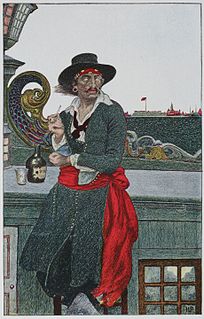 W
WA sash is a large and usually colorful ribbon or band of material worn around the body, draping from one shoulder to the opposing hip, or else running around the waist. The sash around the waist may be worn in daily attire, but the sash from shoulder to hip is worn on ceremonial occasions only. Ceremonial sashes are also found in a V-shaped format, draping from both shoulders to the stomach like a large necklace.
 W
WThe ceinture fléchée [sɛ̃tyʁ fleʃe] is a type of colourful sash, a traditional piece of French-Canadian clothing linked to at least the 17th century. The Métis also adopted and made ceintures fléchées and use them as part of their national costume. French-Canadian and Métis communities share the sash as an important part of their distinct cultural heritages, their cultural distinctions, their nationalities, their national costumes, their histories and their resistance. While the traditional view is that the ceinture fléchée is a French-Canadian invention, other origins have been suggested as well. According to Dorothy K. Burnham who prepared an exhibit on textiles at the National Gallery of Canada in 1981, and published an accompanying catalogue raisonné, this type of finger weaving was learned by residents of New France from Indigenous peoples. It is believed that French settlers-habitants were influenced and inspired by "Wampum Belts" and learned specific finger-weaving patterns from Indigenous Peoples of the Eastern Woodlands. With European wool-materials, the syncretism and unification of French and Indigenous finger-weaving techniques resulted in the making of Arrowed Sashes. L'Assomption Sash is the oldest known sash design; produced by French habitants or artisans in Québec.
 W
WGrand Cross is the highest class in many orders, and manifested in its insignia. Exceptionally, the highest class may be referred to as Grand Cordon or equivalent. In other cases, there may exist a rank even higher than Grand Cross, e.g. Grand Collar. In rare cases, the insignia itself is referred to as the "grand cross".
 W
WA necklet is a type of decoration which is designed to be worn and displayed around a person's neck, rather than hung (draped) from the chest as is the standard practice for displaying most decorations.
 W
WAn obi (帯) is a belt of varying size and shape worn with both traditional Japanese clothing and uniforms for Japanese martial arts styles. Originating as a simple thin belt in Heian period Japan, the obi developed over time into a belt with a number of different varieties, with a number of different sizes and proportions, lengths, and methods of tying. The obi, which once did not differ significantly in appearance between men and women, also developed into a greater variety of styles for women than for men.
 W
WA presidential sash is a cloth sash worn by presidents of many nations in the world. Such sashes are worn by presidents in Africa, Asia, Europe and, most notably, in Latin America.
 W
WA tasuki is a fashion accessory used for holding up the long sleeves of the Japanese kimono. It is a sash made from either cloth or cord that loops over each shoulder and crosses over the wearer's back. The bottom of the kimono sleeves can then be tucked into the loop, holding them back for convenience and functionality.